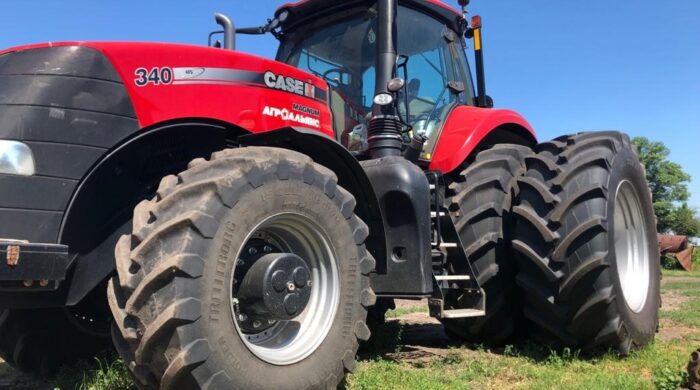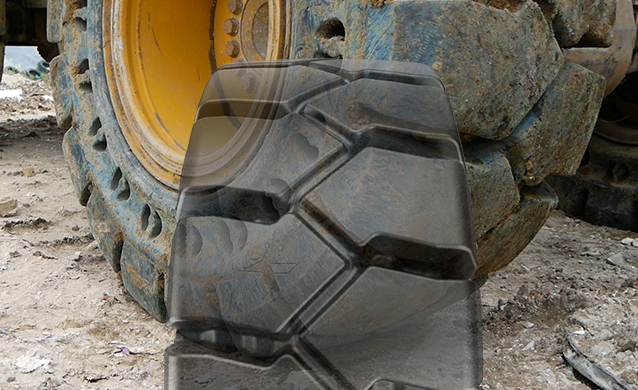Why does the same size tire, in a different brand, often have a slightly larger or smaller overall diameter & section width, how much can variance be, what is impact on equipment, and do you build product in accordance to a specific standard and benchmark?
The Tire & Rim Association of America, established in 1903, became the governing body that drove to standardization of tires, tubes, valves, flaps, and corresponding rims to help both manufacturers as well as consumers solve the problem of sourcing products. The European Tyre and Rim Technical Organization (ETRTO) came into existence in the early 1960’s to standardize pneumatic tires and rims across the European Union. Today the T&RA, as well as the ETRTO and other regional associations, are responsible to standardize and interchange tires, rims, valves, and all associated components, from passenger vehicles to bicycle tires, and to include agricultural tires. These organizations provide huge advantages as they eliminate ambiguous interpretations of nominal sizes between tire manufacturers, vehicle makers, and/or by country providing standardization across all platforms.
From a standard perspective, as an Ag tire manufacturer, each size that we develop either as a bias ply or as a radial product must conform and be within the following tolerance for any given tire size in millimeters or inches:
- Tire Overall Diameter (O.D.) = + / – 2% versus the Industry Size Standard
- Tire Section Width (S.W.) = + / – 4% versus the Industry Size Standard
In addition to the above design limits, there are other considerations that will affect how the tire design and construction will interplay when compared to the industry tire standards for any given size:
- Inflated tire dimensions (tire geometry) can vary with tire construction based on the material positioning of layers after curing despite meeting the standards requirement by size and tire type: Standard, IF, or VF.
- Radial tires with a steel belt package or belts may have different inflated OD from the same size tire with nylon breakers.
- The tire tread depth based on the lug design affects the overall diameter (OD) of a standard R-1 pattern versus the same sized tire with deeper R-1W, or R-2 tread depth.
- Tire tread depth will also differ from manufacturer to manufacturer which will affect the tire geometry despite tires being of the same size and within the above industry tolerances.
- In addition, tire weight is not mandated in the standard beyond the above dimensional requirements, therefore the type of tire or materials used will affect the deflection and geometry of the tire under load.
- Specifically, in bias ply tires, the different ply rating or load ratings of the same size can result in different inflated overall diameter (OD) based on a given air pressure/tire load.
- Lug design can also influence how the tire under load compares to the industry standard when fully inflated.
- Bead and sidewall optimization by each manufacturer can impact the type and width of the rim recommended that could deviate from the industry standard as an alternative rim fitment.
Below is an MAXAM example of our new VF480/80R50 AgriXtra 85 tire (under development) tire specifications compared to the industry standards from both the ETRTO and the T&RA:
| Tire Size | Outside Diameter | Section Width | Tread Depth | Design Rim |
Alternative Rims | |||
| (mm) | (in) | (mm) | (in) | (mm) | (32nds) | |||
| VF480/80R50 | 2038 | 80.2 | 479 | 18.9 | TBD | TBD | 16.00 | DW16A |
| T&RA Standard | 2038 | 80.2 | 479 | 18.9 | 41 | 59 | 16.00 | DW16 |
| ETRTO Standard | 2038 | 80.2 | 479 | 18.9 | – | – | 16.00 | DW16L |
In the agricultural market, it is how the equipment is utilized or the operational requirements that will affect tire design and performance within the industry standards. As agricultural tires are considered “off-road” and not US Department of Transportation (DOT) regulated, there is some flexibility in the design process for each tire manufacturer to enhance features to deliver improved performance for a given size or tread. In all instances, the type of machinery, soil conditions, application (intensity of use), and air pressure maintenance will have a direct impact on its performance even after improvements. Listed in the below table are some general considerations related to using tires from different manufacturers on the same machine or axle based on application differences:
| Tire Operational Condition | Tire Issue | Recommended Action |
| Tire slip due to different brand tire and contact patch. | Different brand tires on the same axle can create increased tire slip due to diameter or tread width differences when inflated and under load. | Maintain the same brand and size tires on the same axle or side by side to maximize the best possible traction and tire footprint, ensuring improved tire slip. |
| Excessive tire wear caused by overall diameter. | Tire wear for more than 10% difference in tread depth or overall diameter (OD) on the same axle can result in a loss of traction, increased slip, increased fuel consumption, or can impact gear ratios. | Tires that have uneven wear or large difference in overall diameter (OD) will lose traction or have increased fuel consumption , impacting the gear ratio of a front wheel assist tractor. We suggest replacing the tires on the axle of the same brand and OD. |
| Tire Diameter or Width Differences. | Tires that have more than 5% difference in overall diameter that are operating side by side or on the same axle can lead to a loss of traction, increased slip, gear ratio issues, and increased soil compaction as the load will shift to the larger diameter tire. | Tire diameters need to be as closely matched as possible to prevent excessive tire slip and to limit any gear ratio issues. Larger OD tires used side by side can shift the axle load to the larger OD tire, increasing both soil compaction and limiting tire footprint. We suggest replacing tires on an axle at the same time with the same brand tires to limit this occurrence. |
MAXAM’s AGRIXTRA product range is designed to meet the tightest tolerances against industry standard for each size or based on a given load or speed, ensuring optimal contact patch without compromising the steering, flotation, traction, or torque transfer capability of the tire. We are constantly developing new VF tires sizes to not only complement our existing offer, but to also meet the evolving demand for higher load, platform, and technological advancement. We use steel belts in specific products to deliver improved performance and service life.



